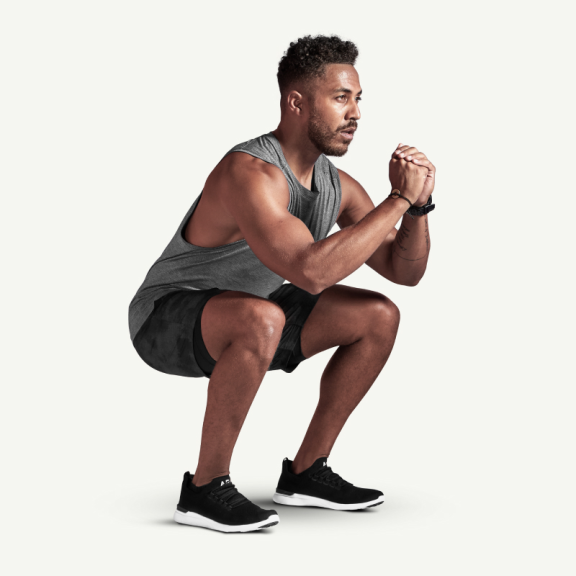When performed correctly, squats are a functional exercise that can boost your calorie burn, help prevent injuries, strengthen your core, and improve your balance and posture. The squat is a fundamental movement pattern that requires multiple joint and muscle integration.
As a dynamic strength training exercise, squats require several muscles in your upper and lower body to work together simultaneously. Many of these muscles help power you through daily tasks such as walking, climbing stairs, bending, or carrying heavy loads. They also help you perform athletic-related activities.
Muscles worked with squats
The obvious muscles targeted are in the lower body, but in order to do this compound exercise correctly, you also need to use several muscles above your waist.
The lower muscles targeted in a squat include your:
- gluteus maximus, minimus, and medius (buttocks)
- quadriceps (front of the thigh)
- hamstrings (back of the thigh)
- adductor (groin)
- hip flexors
- calves
In addition to the lower body, the squat also targets your core muscles. These muscles include the rectus abdominis, obliques, transverse abdominis, and erector spinae. If you do a back squat or overhead squat, you’ll also work the muscles in your shoulders, arms, chest, and back.

The Basic Squat
Known as a bodyweight squat or an air squat, the most basic type of squat uses just your body weight for resistance. Variations of the squat can include weights, like barbells or dumbbells, resistance bands, or yoga balls.
To do a basic squat:
a) Start with feet slightly wider than hip-width apart, toes turned slightly out.
b) Keeping your chest up and out and the pressure even in your feet, engage your abdominals and shift your weight back into your heels as you push your hips back.
c) Lower yourself into a squat until either your heels begin to lift off the floor, or until your torso begins to round or flex forward. Your depth should be determined by your form.
d) Keep your chest out and core tight as you push through your heels to stand back up to your starting position. Squeeze your glutes at the top.
e) Perform 10–15 reps. Work up to 3 sets.
The Benefits of Squats
1. Strengthens your core
Having strong core muscles can make everyday movements like turning, bending, and even standing easier. Not only that, but a strong core can improve your balance, ease pain in your low back, and also make it easier to maintain good posture.
A 2018 study that compared core muscle activation during a plank with back squats found that back squats resulted in greater activation of the muscles that support your back.
Based on these findings, the researchers recommended targeting the core muscles with back squats to reduce the risk of injury and to boost athletic performance.
2. Reduces the risk of injury
When you strengthen the muscles in your lower body, you’re better able to execute full-body movements with correct form, balance, mobility, and posture. Plus, adding squats in your overall workout routine also helps strengthen your tendons, ligaments, and bones.
3. Burns calories
Calorie burning is often equated with aerobic exercises such as running or cycling. But performing high-intensity, compound movements like the squat can also burn a lot calories.
4. Strengthens the muscles of your lower body
Your lower body boasts some of your largest and most powerful muscles. From getting out of bed, to sitting down in a chair, your glutes, quadriceps, hamstrings, adductors, hip flexors, and calves are responsible for almost every move you make.
Strength training exercises like squats can help strengthen and tone the muscles in your lower body. When these muscles are in good condition, you may find that you can move more comfortably, with less pain, and that everything from walking to bending to exercising is easier to do.
5. Boosts athletic ability and strength
If you compete in a sport, adding jump squats to your workout may help you develop explosive strength and speed which, in turn, may help improve your athletic performance. A 2016 study investigated the effects of jump squat training done 3 times a week over the course of 8 weeks.
Based on the results of the study, the researchers concluded that jump squat training has the ability to improve several different athletic performances simultaneously, including sprint time and explosive strength.


